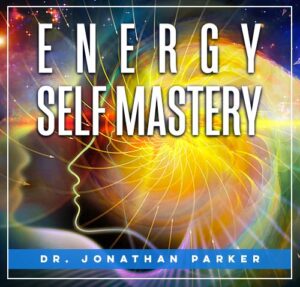How Journaling Reflects Energy Fluctuations

Before diving in, please note: This post is for informational purposes only. If you’d like to know more about how we approach topics, feel free to check out our friendly Disclaimer Page.
Hey there, amazing readers! 🖐️ Just a quick note: yes, we know there are a lot of ads here. Trust us, we get it—it’s not the prettiest look, but they help us keep this blog alive and kicking. Those pesky little ads cover the costs of all the behind-the-scenes magic, from hosting and tech stuff to creating content we hope you’ll love.
We’re committed to delivering quality posts, and your support (even just sticking around despite the ads) means everything to us. So, bear with us, and thanks for helping us keep the good vibes rolling. Now, on to the fun stuff! 😉
TRANSLATE BUTTON AT THE END OF THE ARTICLE
A Quick Overview
Journaling is more than just writing down thoughts; it’s a powerful tool that can reflect our energy fluctuations.
Whether it’s the motivation that surges on a bright morning or the exhaustion that wraps around us after a long day, our energy levels play a significant role in shaping our thoughts and actions.
By understanding how to track those energy patterns through journaling, we can gain insights into our emotional states, enhance our productivity, and even boost our overall well-being.
Let’s dive into this fascinating connection!
Understanding Energy Fluctuations in Our Daily Lives
Energy fluctuations are part of being human.
Each day brings its own rhythm, shaped by numerous factors such as sleep, diet, stress, and even the weather.
Some days, I feel like I can conquer the world; other days, I find it hard to get out of bed.
This natural ebb and flow can be incredibly telling.
Circadian Rhythms: These biological cycles affect our alertness and energy levels.
Most of us experience a peak in alertness in the morning, followed by a dip in the afternoon.
Diet: What we eat fuels our bodies.
A sugar-heavy breakfast might give a quick jolt, but it can lead to a crash later.
On the flip side, a balanced meal can sustain energy throughout the day.
Exercise: Physical activity can boost energy—and the endorphins released during exercise can lead to that lovely post-workout glow.
Mental State: Remember those days when anxiety gnaws at you?
Stress can drain energy faster than a leaky faucet.
Being aware of these fluctuations helps us navigate daily challenges.
We can adjust our routines based on when we typically feel energetic or sluggish.
What is Journaling and Its Benefits for You?
Journaling is essentially putting pen to paper (or fingers to keys) to express thoughts, feelings, and experiences.
I’ve found that it can take many forms, from traditional diaries to modern bullet journals.
The benefits are multifold.
Emotional Clarity: Writing helps me untangle my thoughts.
When I jot down feelings, they often transform from overwhelming to manageable.
Stress Relief: There’s something cathartic about venting frustrations.
Journaling helps me unburden my mind and promote relaxation.
Master your Energy and Awaken Your Spirit – start your journey here.

Self-Reflection: By revisiting past entries, I can see patterns in my thoughts and behaviors.
It’s eye-opening to observe my growth over time.
Goal Setting: I often use my journal to map out my aspirations.
Writing my goals down makes them feel more tangible and achievable.
Journals can become safe spaces, inviting us to explore our innermost thoughts without judgment.
The Connection Between Emotions and Energy Levels
Emotions and energy are deeply intertwined.
Think about how you feel when you receive good news.
My energy spikes!
Conversely, when I’m facing a tough situation, I can feel drained, both physically and emotionally.
Positive Emotions: Joy, excitement, and love can elevate energy, making us feel like we can take on anything.
Ever noticed how much more you can accomplish when you’re in a good mood?
Negative Emotions: On the other hand, sadness, anger, and anxiety can sap our energy.
It’s almost like carrying a heavy backpack everywhere.
Mood Swings: These can be influenced by countless factors—hormones, sleep, and even the company we keep.
Recognizing these shifts through journaling helps me understand what triggers different emotional states.
Mindfulness: Recording emotions allows for greater awareness.
The more cognizant I am of my feelings, the better I can manage them.
When we connect our emotions to our energy levels, journaling becomes a powerful tool for personal insight.
How Journaling Helps Track Your Energy Patterns
I’ve come to appreciate how journaling can be a mirror reflecting my energy patterns.
By regularly documenting my feelings and activities, I can see what energizes or drains me.
Daily Logs: Simple entries about my energy levels at various times can reveal a lot.
Did I feel more energetic after a coffee break, or did a long meeting leave me exhausted?
Mood Tracking: I often jot down my mood alongside energy levels.
Over time, I’ve noticed patterns: stress often coincides with lower energy, while periods of creativity boost my motivation.
Activity Correlation: Linking my energy to specific activities—like working on a passion project versus mundane chores—helps me understand what fuels my enthusiasm.
Visual Representations: Sometimes, I create charts or graphs to represent my energy fluctuations.
It’s a fun way to visualize my mood over time.
This reflective practice allows me to adapt my day-to-day activities, planning tasks when I know I’ll be at my best.
Different Types of Journals for Recording Energy
Journaling can take on many forms, each serving different purposes.
Here are a few types that I personally enjoy:
Gratitude Journals: These focus on positive reflections.
Writing down what I’m grateful for can uplift my spirits, boosting my energy levels.
Bullet Journals: This method combines planning and reflection.
I love using bullet points to jot down daily energy levels or tasks.
Mood Trackers: These dedicated journals specifically track emotions and energy.
I often color-code my entries based on how I feel.
Dream Journals: Recording dreams can provide insight into subconscious feelings.
Master your Energy and Awaken Your Spirit – start your journey here.

I sometimes find that my energy levels are influenced by what I experience during sleep.
Experimenting with different journaling styles can be exciting.
I encourage you to find what resonates with you!
Exploring Daily Routines: When Do You Feel Energized?
By keeping a daily log of my activities and corresponding energy levels, I’ve learned when I’m at my peak.
Morning vs.
Evening: I often feel more energized in the morning, especially after a good night’s sleep.
Knowing this helps me tackle the day’s bigger tasks early on.
Break Times: I pay attention to how my energy dips post-lunch.
Taking breaks or going for a short walk can reinvigorate me.
Routine Adjustments: If I notice a consistent low energy at a certain time, I might adjust my schedule.
Could it be time to cut down on back-to-back meetings?
Mindfulness Practices: Incorporating meditation or deep breathing can recharge my spirit, particularly during stressful times.
Being conscious of these patterns empowers me to make intentional adjustments that align with my energy levels.
The Impact of Stress on Your Energy and Mood
Stress is a sneaky thief that can rob us of our energy.
I’ve been there, feeling overwhelmed by the demands of life.
Here’s how stress typically plays out:
Physical Symptoms: Stress can lead to headaches, fatigue, and sleeplessness, all of which zap energy.
Mental Strain: The constant chatter of worries can create a fog that dulls motivation and creativity.
Coping Mechanisms: Sometimes, people resort to unhealthy habits—overeating or oversleeping—affecting energy levels further.
Reflective Writing: I’ve found that journaling about stressors can help.
By naming them, I can often lessen their hold on my energy.
Recognizing the link between stress and energy levels allows me to proactively manage my mental health.
Creative Journaling: Channeling Your Energy Positively
Creative journaling can be a fantastic outlet for energy.
When I feel overwhelmed, I often turn to art, poetry, or doodling to express myself.
Art Journals: Mixing sketches and colors can shift my mood, allowing my creativity to flow.
I find that visual expression often brings a surge of energy.
Poetry and Prose: Writing poetry can be therapeutic.
I sometimes pen verses during low-energy moments, transforming my feelings into art.
Mind Maps: These can stimulate my thoughts visually, helping me organize ideas and channel my energy into a productive direction.
Free Writing: Setting a timer and writing whatever comes to mind can unleash pent-up energy.
I’ve had some of my best ideas this way!
Creative journaling is a freeing way to engage with my emotions and boost energy.
Reflecting on Energy Highs: Celebrating Achievements
It’s essential to celebrate our energy highs!
Whenever I accomplish something that took a considerable amount of effort, I make it a point to write it down.
Acknowledging Success: Whether big or small, recognizing these achievements fuels future endeavors.
Positive Reinforcement: I often revisit these entries when I’m feeling low.
They serve as reminders of what I can accomplish.
Visual Reminders: I sometimes create vision boards that celebrate my successes.
Seeing them can reignite my motivation.
Sharing with Others: Celebrating together with friends or family can amplify the joy and energy from achievements.
Reflecting on these energy highs not only boosts my mood but also provides motivation for the future.
Identifying Energy Lows: What Journals Can Reveal
Journals can reveal the patterns behind our energy lows, acting as a roadmap for better management.
Identifying Triggers: By reviewing past entries, I can pinpoint situations that consistently bring me down.
Patterns Over Time: I’ve noticed that my energy dips during certain seasons or after specific events, making this insight invaluable.
Emotional Awareness: Understanding how specific emotions impact my energy can help me prepare for challenging moments.
Proactive Strategies: With this knowledge, I can decide on interventions—perhaps scheduling lighter tasks during known low-energy periods.
Understanding energy lows can feel liberating.
It’s like turning the lights on in a dim room!
Seasonal Changes: How They Influence Your Journaling
Seasons can impact our energy and mood.
I’ve learned that my journaling reflects these shifts beautifully.
Winter Blues: Shorter days often lead to low energy.
I write about finding ways to stay positive, such as cozy activities or light therapy.
Spring Awakening: The renewal of spring fills me with energy.
I capture my excitement in my journal, planning new projects and adventures.
Summer Vibrance: Longer days and sunny weather often boost my mood.
I document outdoor activities and the joy they bring.
Autumn Reflection: As the year winds down, I take stock.
Journaling about what I’m grateful for helps me appreciate the year more fully.
By observing these seasonal influences, I can tailor my journaling to keep my spirits high.
Using Your Journal to Boost Energy and Motivation!
Finally, let’s talk about actionable steps.
Your journal can be a powerhouse for boosting energy and motivation.
Here are a few strategies that work for me:
Daily Affirmations: Writing positive affirmations can uplift my spirits.
It’s a small but mighty way to start the day.
Goal Visualization: I often sketch out my big dreams.
Seeing them on paper makes them feel tangible and energizing.
Energy Boost Lists: Whenever I feel a slump, I jot down activities that energize me—like running, reading, or dancing.
Reflecting on Progress: Reviewing past entries reminds me of how far I’ve come, pushing me forward.
Creating Rituals: I find that establishing a journaling routine—like writing every morning—can energize my day.
With a few tweaks, your journal can become a go-to resource for maintaining high energy and motivation.
Conclusion
Journaling is a fantastic journey, letting us explore our energy fluctuations and emotional states.
By keeping tabs on our highs and lows, we can make informed choices that enhance our well-being.
Whether you’re looking for a creative outlet or a way to reflect on your daily life, journaling can be your best friend.
So grab a notebook, and let’s start this enlightening adventure together!

The Enlightenment Journey is a remarkable collection of writings authored by a distinguished group of experts in the fields of spirituality, new age, and esoteric knowledge.
This anthology features a diverse assembly of well-experienced authors who bring their profound insights and credible perspectives to the forefront.
Each contributor possesses a wealth of knowledge and wisdom, making them authorities in their respective domains.
Together, they offer readers a transformative journey into the realms of spiritual growth, self-discovery, and esoteric enlightenment.
The Enlightenment Journey is a testament to the collective expertise of these luminaries, providing readers with a rich tapestry of ideas and information to illuminate their spiritual path.
Our Diverse Expertise 🌟
While our primary focus is on spirituality and esotericism, we are equally passionate about exploring a wide range of other topics and niches 🌍📚. Our experienced team is dedicated to delivering high-quality, informative content across various subjects ✨.
To ensure we provide the most accurate and valuable insights, we collaborate with trusted experts in their respective domains 🧑🏫👩🏫. This allows us to offer well-rounded perspectives and knowledge to our readers.
Our blog originally focused on spirituality and metaphysics, but we’ve since expanded to cover a wide range of niches. Don’t worry—we continue to publish a lot of articles on spirituality! Frequently visit our blog to explore our diverse content and stay tuned for more insightful reads.







